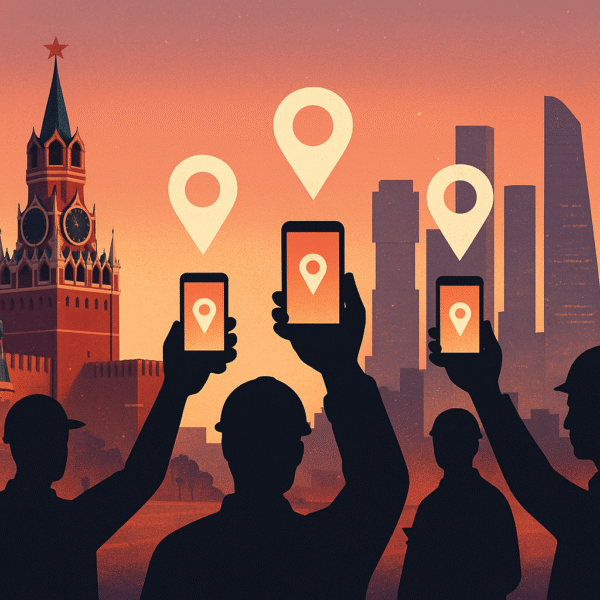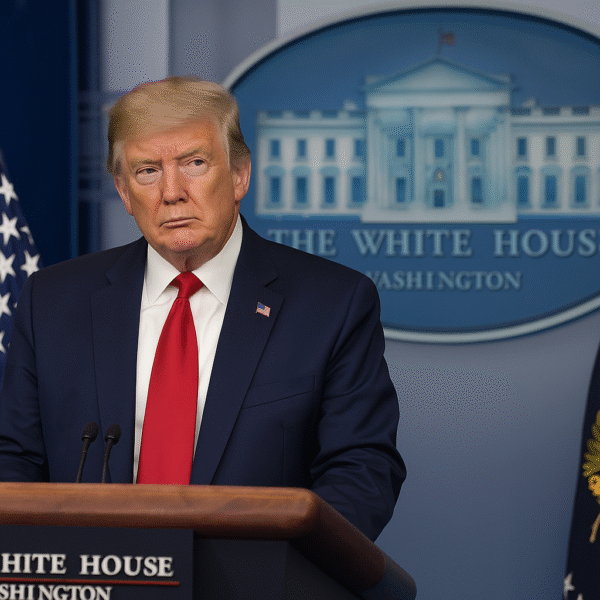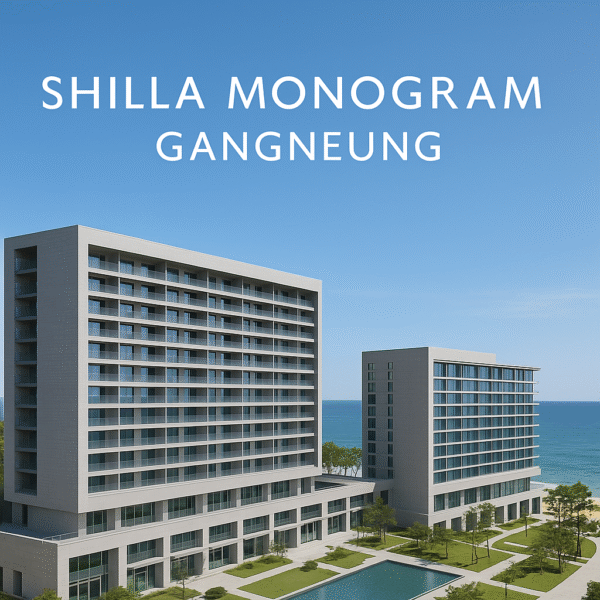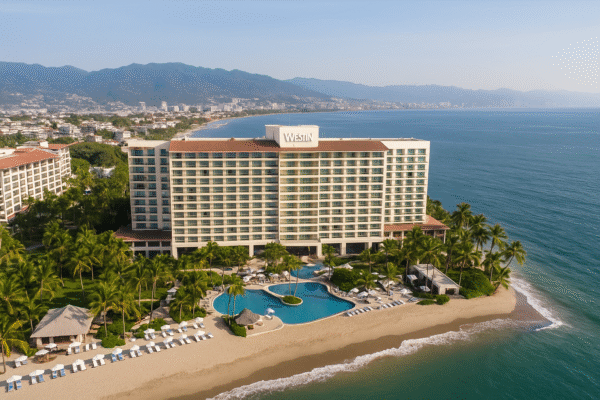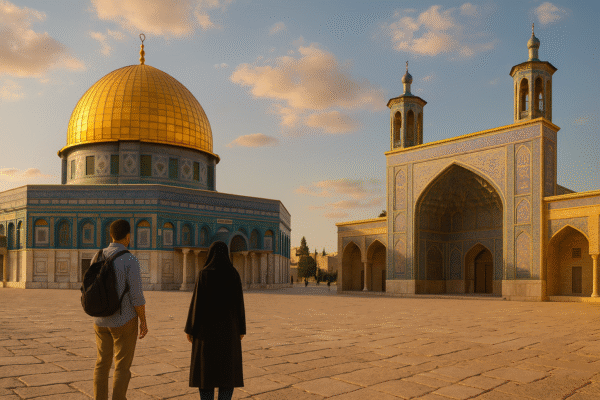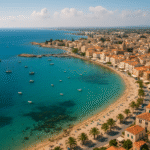Iran and Israel Launch Peace Tourism Initiative to Foster Regional Unity and Global Cooperation
In a historic move toward Middle East reconciliation, Iran and Israel are spearheading a visionary peace-through-tourism initiative led by the International Institute for Peace Through Tourism (IIPT). The initiative seeks to leverage the universal power of travel to transcend borders and build a platform of human connection, mutual understanding, and long-term peace.
Ajay Prakash, the Global President of IIPT, has long championed the role of tourism in global peace-building. His recent appeal for international cooperation through tourism has received resounding support—most notably from Dr. Hormatallah Rafiei, Secretary General of the Association of Air Transport and Travel Agencies of Iran (AATTAI), and Dov Kalmann, Chairman of Israel’s Terranova Tours. Their joint backing of this initiative marks a rare instance of collaborative engagement between Iranian and Israeli tourism leaders and sets a powerful precedent for regional diplomacy.
Tourism as a Bridge Between Cultures and Conflicts
Dr. Rafiei envisions tourism as a diplomatic tool far stronger than formal treaties. “Tourism is not merely an economic sector—it is humanity’s ambassador,” he said in a recent statement. “Through shared experiences and cultural immersion, we can develop empathy and dismantle the barriers that politics often erect.”
Iran, with its ancient Persian heritage, UNESCO-listed sites like Persepolis and Yazd, and centuries-old hospitality traditions, is aiming to lead by example in the global tourism peace movement. The country is positioning its people—not just its landmarks—as central to cross-cultural exchange.
The initiative proposes the establishment of peace tourism corridors, where travelers from Israel, Iran, and potentially Lebanon, Syria, and Saudi Arabia could engage in spiritual and cultural journeys that emphasize shared values rather than political divides. These journeys would promote interfaith understanding by connecting iconic religious destinations such as Mecca and Jerusalem—symbolizing reconciliation between Islam and Judaism.
Israel’s Tourism Sector Responds with Enthusiasm
While the Israeli government has yet to formally respond, leaders in the Israeli private sector are embracing the vision with unprecedented enthusiasm. Tel Aviv-based tourism veteran Dov Kalmann, an internationally recognized “Tourism Hero,” sees the initiative as a watershed moment.
“I dream of a time when Israelis can freely visit Beirut and Damascus, and pilgrims from across the Arab world are welcomed in Israel,” Kalmann remarked. He also emphasized the untapped potential for joint religious tourism experiences—where Muslims, Jews, and Christians can connect through shared narratives.
The Israeli tourism community’s engagement suggests that the private sector may be an effective driver of regional peace, especially when governmental diplomacy stalls. Industry leaders are now urging hotels, tour operators, and transportation companies across the Middle East to come together in a unified network for peace tourism development.
Economic, Cultural, and Political Potential of Tourism Diplomacy
Tourism remains one of the few industries capable of creating dialogue across deeply entrenched geopolitical rifts. According to data from the World Travel & Tourism Council (WTTC), the Middle East’s travel sector contributed over $270 billion to the region’s GDP in 2023, signaling strong economic incentives to enhance cooperation.
But beyond numbers, this initiative promotes a culture of openness and respect. As more cross-border travel corridors emerge, the tourism industry could become a blueprint for broader regional reconciliation. Cultural diplomacy—where tourists become informal ambassadors—helps humanize “the other” and replace fear with curiosity.
In a recent white paper by the United Nations World Tourism Organization (UNWTO), peace tourism was highlighted as a crucial strategy for conflict-prone regions. Iran and Israel’s initiative directly aligns with UN Sustainable Development Goal 16: “Peace, Justice and Strong Institutions,” which supports inclusive societies and accountable institutions.
A Vision for Peace Without Borders
Both Iranian and Israeli leaders involved in the initiative believe that the project could eventually inspire other regions plagued by division. From South Korea’s DMZ tourism to Rwanda’s post-genocide reconciliation tours, the world is already seeing travel used as a means to foster healing.
Ajay Prakash of IIPT emphasized that true peace must be people-led. “We do not need formal treaties to connect hearts. Every conversation, every shared meal, every travel story exchanged across borders is a step toward global harmony,” he stated.
The initiative also underscores the potential for collaborative educational exchanges, cultural festivals, and tourism fairs between Middle Eastern nations. Iran has already proposed launching “Peace Tourism Weeks” in Tehran and Shiraz, while Israeli tourism leaders are considering similar programs in Tel Aviv and Haifa.
Outlook and Global Significance
While significant political and security challenges remain, this initiative provides a new lens through which nations can approach peacebuilding. If successful, Iran and Israel’s cooperation could pave the way for multi-country tourism packages, regional airline partnerships, and cross-border travel visas that strengthen bonds beyond politics.
This grassroots, people-focused approach offers a refreshing counterpoint to traditional diplomacy. In a region where tensions often dominate headlines, the story of peace through tourism stands as a reminder that hope and humanity endure.
As Dr. Rafiei put it: “Tourism shows us that we are more alike than we are different. It reminds us that peace is not just possible—it is essential.”
For more travel news like this, keep reading Global Travel Wire

